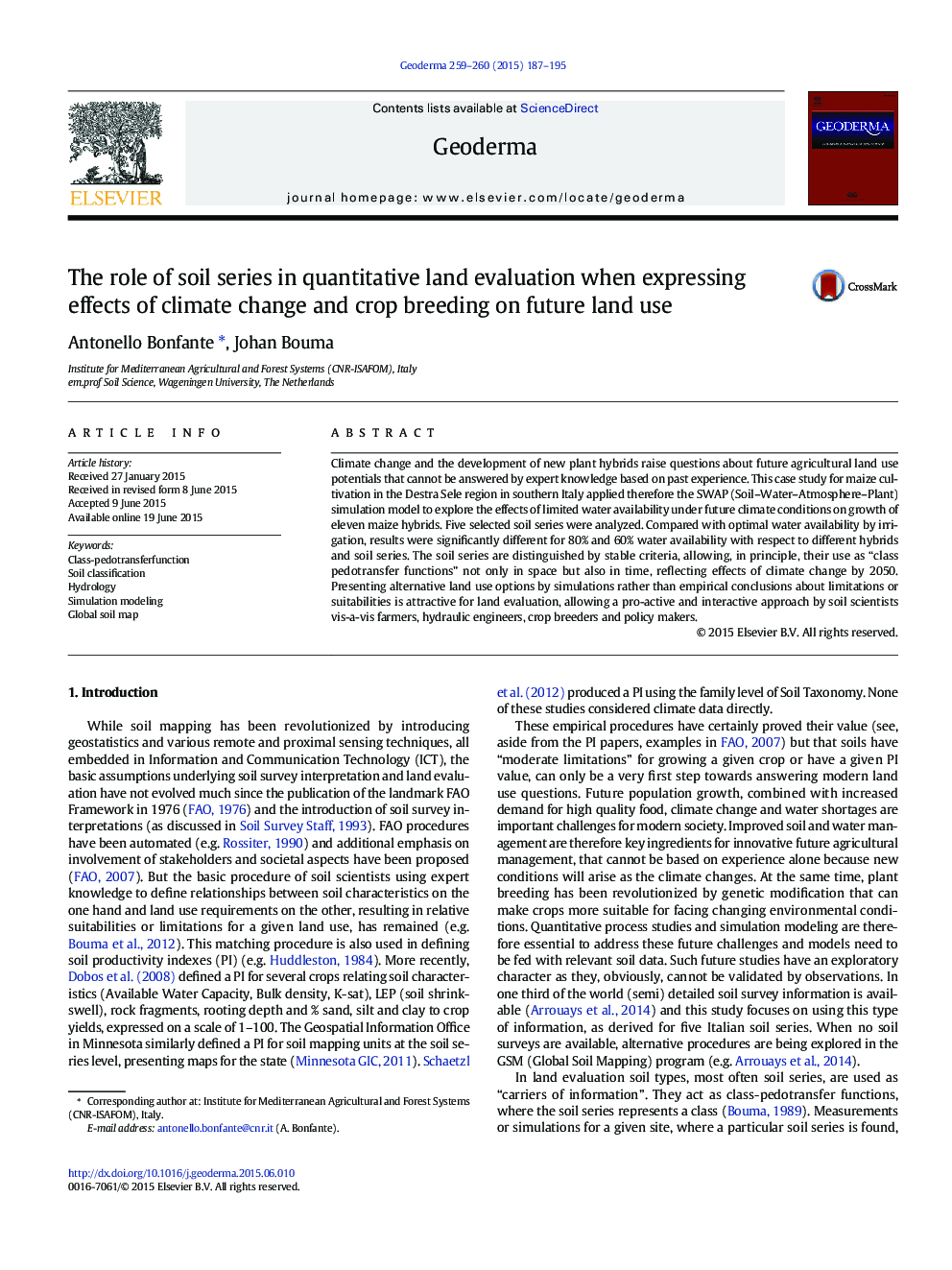| کد مقاله | کد نشریه | سال انتشار | مقاله انگلیسی | نسخه تمام متن |
|---|---|---|---|---|
| 6408516 | 1629456 | 2015 | 9 صفحه PDF | دانلود رایگان |
- Traditional land evaluation cannot answer future land use questions dealing with climate change.
- Simulation modeling, can fill the gap of traditional LE, with a quantitative analysis of predictions.
- Some elements of the traditional LE procedure are still highly relevant.
- The soil series can be used as “carriers of information” in time, reflecting effects of climate change.
Climate change and the development of new plant hybrids raise questions about future agricultural land use potentials that cannot be answered by expert knowledge based on past experience. This case study for maize cultivation in the Destra Sele region in southern Italy applied therefore the SWAP (Soil-Water-Atmosphere-Plant) simulation model to explore the effects of limited water availability under future climate conditions on growth of eleven maize hybrids. Five selected soil series were analyzed. Compared with optimal water availability by irrigation, results were significantly different for 80% and 60% water availability with respect to different hybrids and soil series. The soil series are distinguished by stable criteria, allowing, in principle, their use as “class pedotransfer functions” not only in space but also in time, reflecting effects of climate change by 2050. Presenting alternative land use options by simulations rather than empirical conclusions about limitations or suitabilities is attractive for land evaluation, allowing a pro-active and interactive approach by soil scientists vis-a-vis farmers, hydraulic engineers, crop breeders and policy makers.
Journal: Geoderma - Volumes 259â260, December 2015, Pages 187-195
